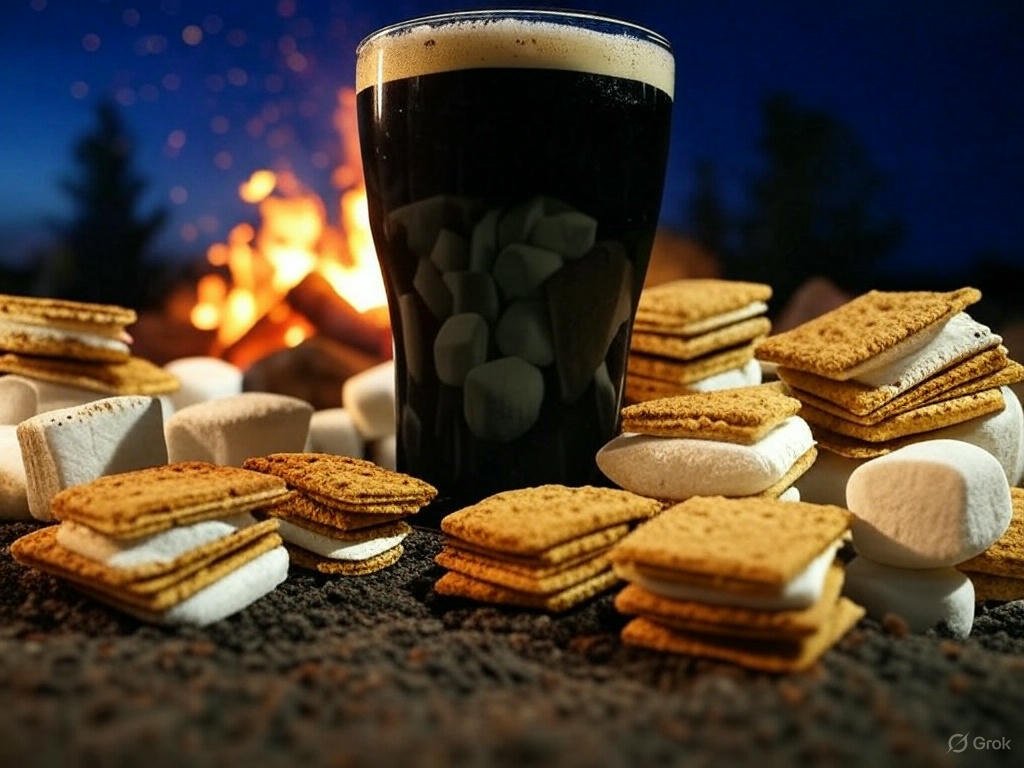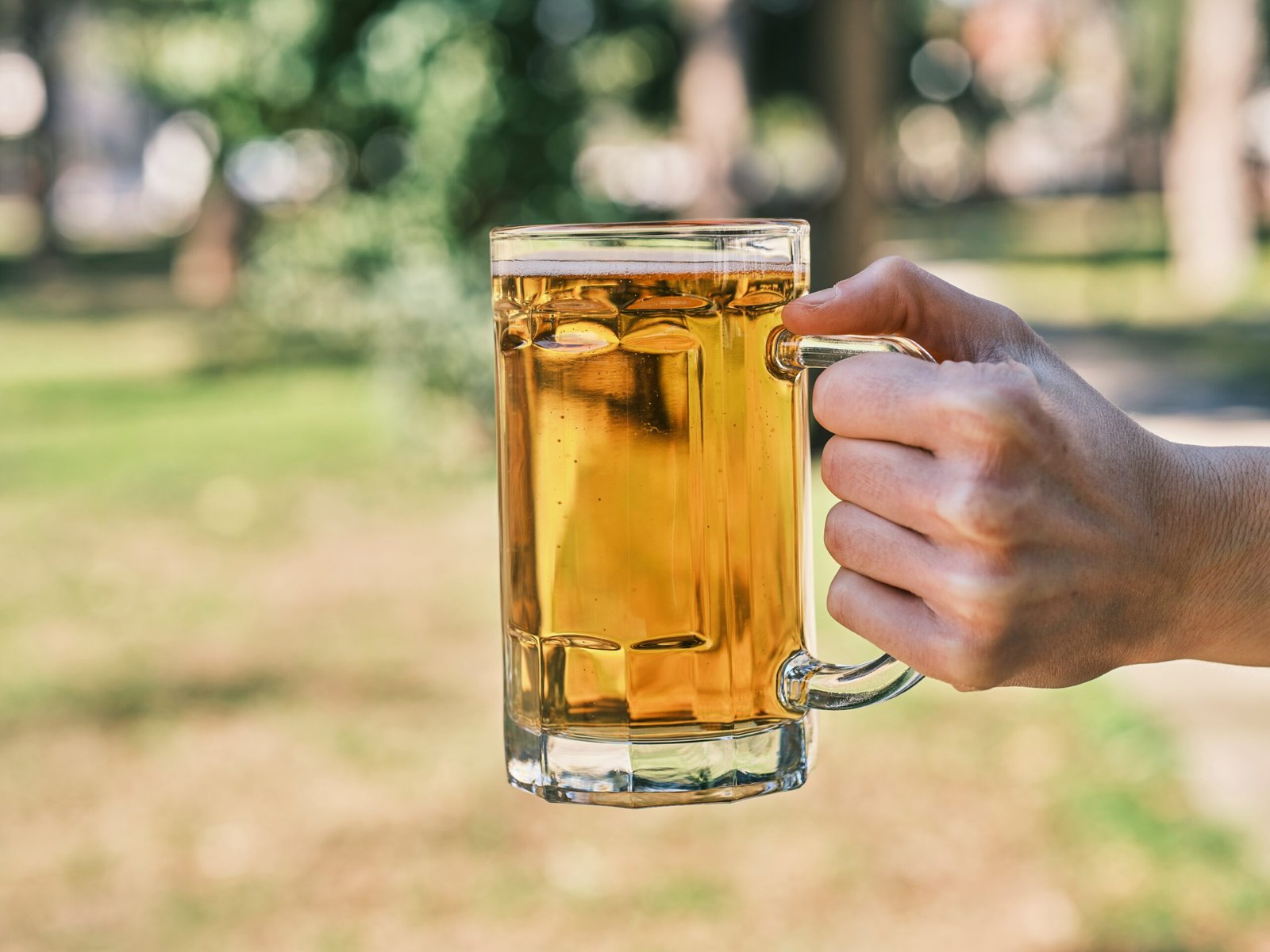The Allure of Campfire Stout
Imagine the warmth of a crackling campfire, the glow casting shadows on the surrounding trees as night falls. The aroma of burnt wood mingles with the sweet scent of roasting marshmallows and the crumbly texture of graham crackers, creating an idyllic scene of camaraderie and comfort. This is the enchanting essence of Campfire Stout, a brew that aims to encapsulate that cozy feeling in every sip. This unique stout is not just a beverage; it is an experience, inviting you to indulge in its rich, smoky, and chocolatey flavors that evoke fond memories of nights spent outdoors.
At its core, Campfire Stout boasts a complex flavor profile that balances rich malts with subtle hints of smoke, imparting a depth that is both intriguing and satisfying. The chocolate notes are reminiscent of decadent desserts, beckoning with each sip. As you savor this stout, you will taste the familiar sweetness of gooey marshmallows, a nostalgic nod to childhood camping trips. The graham cracker component adds a delightful crunchiness, further enhancing the overall experience. Together, these flavors create a harmonious blend that transports drinkers straight to those cherished campfire gatherings.
The beauty of brewing your own Campfire Stout lies not only in reaping the rewards of a lovingly crafted beer but also in the opportunity to reminisce about the simple joys of life. With each batch, you invite friends and family to share in the experience, fostering connections while savoring this remarkable stout. The perfect combination of nostalgia and flavor comes alive in this brew, ensuring that it will quickly become a staple in your homebrewing repertoire. Embrace the art of brewing and let the allure of Campfire Stout inspire your next fermentation adventure.
Ingredients: The Components of Your Campfire Dream
Creating a Campfire Stout requires a careful selection of ingredients, each contributing uniquely to the overall flavor profile. One of the primary components is 6 lbs of dark dried malt extract (DME). This ingredient serves as the backbone of the stout, imparting a profound depth and robust character that defines the base of the beer. Dark DME is instrumental in providing the stout’s rich and malty flavor, which is essential for any quality brewing experience.
Next, we have 8 oz of chocolate malt, a key player in achieving the distinct chocolatey notes that characterize the Campfire Stout. This specialty grain introduces an elegant layer of sweetness with roasted notes, which pairs harmoniously with the malt extract. The chocolate malt not only enhances the color of the stout, giving it that enticing dark hue but also contributes to the silky mouthfeel that many enthusiasts crave.
The intriguing addition of 4 oz of graham cracker crumbs brings a nostalgic flavor reminiscent of campfire s’mores to the brew. This ingredient subtly infuses a mildly sweet and crunchy profile, complementing the chocolate malt perfectly. Additionally, the 4 oz of marshmallow fluff provides a unique touch, lending a creamy sweetness during the secondary fermentation. This fluff contributes to the soft, smooth finish of the stout, evoking memories of warm summer nights around the campfire.
To round off the ingredients, we utilize 1 oz of Fuggle hops, which perform the essential function of balancing the sweetness derived from the malts and other adjuncts. The earthy and herbal qualities of Fuggle offer a gentle bitterness, curbing the potential for the stout to become overly sweet. Lastly, S-04 yeast is an excellent choice for fermentation, known for its ability to produce a clean finish while enhancing the overall complexity of flavors. These components combined ensure your Campfire Stout is both complex and utterly delightful, setting the stage for a memorable brewing experience.
Brewing Process: Crafting Your Smoky Stout
The process of brewing Campfire Stout begins with assembling the necessary ingredients and equipment. It is essential to prepare all your materials ahead of time to ensure a smooth brewing experience. Start by heating a sufficient amount of water for the mash, typically around 160°F. Once the water reaches the desired temperature, add the crushed grains to create a mash. The combination of malted barley, roasted barley, and any specialty grains will lend the stout its characteristic flavors.
After mashing for approximately 60 minutes, it is crucial to proceed with the boiling phase. The grains are then rinsed, and the sweet wort is collected. Bring the wort to a vigorous boil, being careful to monitor for boil-overs. During this 60-minute boil, you will incorporate hops for bitterness and aroma. For a well-balanced flavor, consider adding hops at various stages: early in the boil for bitterness and later for aromatic qualities. The choice of hops used significantly influences the final outcome of the stout, contributing to its distinguished profile.
Following the boil, it is essential to rapidly cool the wort to around 65°F before transferring it to a sanitized fermentation vessel. Yeast is then pitched, initiating the fermentation process which should last about two weeks. A consistent fermenting temperature is vital for producing a clean, flavorful stout.
To achieve the desired flavor complexity, five days into fermentation, carefully add graham cracker crumbs and marshmallow fluff. These unique ingredients are critical for imitating the essence of s’mores while enhancing the chocolatey notes of the stout. Maintain a patient approach throughout the brewing journey, as the time spent nurturing your brew directly impacts the final product. Once fermentation is complete, you will have created a bold and cozy Campfire Stout—a perfect reflection of your brewing dedication.
Sip, Share, and Enjoy Your Campfire Stout!
As we reach the end of our journey exploring the delightful world of Campfire Stout, we invite you to take the plunge into brewing this unique and flavorful beer. The smoky, chocolatey dream that is Campfire Stout offers an unparalleled experience, combining the essence of a cozy campfire with the sweetness of s’mores. With its rich flavors and inviting aroma, this stout is not just a drink; it’s an experience worth savoring.
We encourage you to gather your brewing equipment and give this recipe a try. Immerse yourself in the process, and witness how the combination of ingredients transforms into a delectable stout that perfectly encapsulates the spirit of campfire gatherings. Don’t forget to document your brewing adventure! Share your experiences and photos with our community. We would love to hear how your Campfire Stout turns out and if you’ve added any personal twists to the recipe.
Engage with us by leaving comments on our blog. Your stories and feedback not only enhance our community but also inspire fellow brewers to embark on their own chocolate stout adventures. Remember, each sip brings you closer to the warm, nostalgic feeling of summers spent around a fire, making this stout an excellent choice for both casual drinkers and seasoned enthusiasts alike.
So gather your friends, pour yourselves a glass, and enjoy the flavors of your very own Campfire Stout. Here’s to the smoky and chocolatey delights that await you in every pint. Cheers to your next homebrew hit and the wonderful experiences that come with sharing it!


